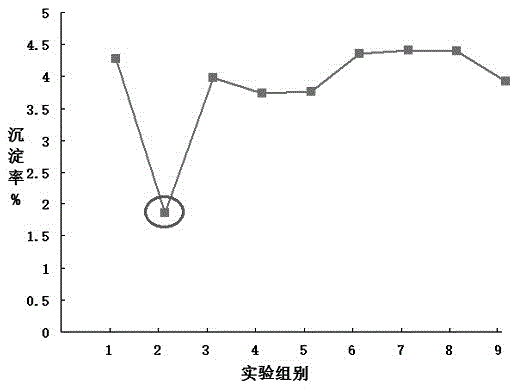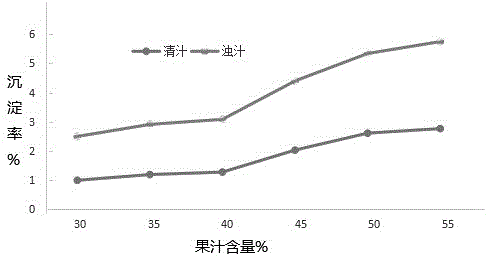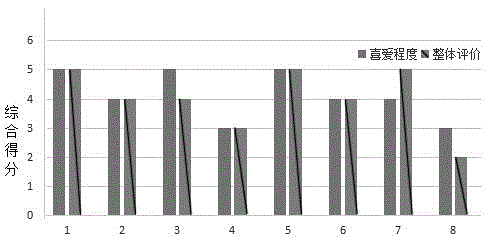Rose-containing sparkling wine and preparation method thereof
A technology of rose and sparkling wine, which is applied in the field of alcoholic beverages. It can solve the problems of unused anthocyanins, not wide range of suitable people, and loss of beneficial ingredients, and achieve the effect of high fruit juice content, low sugar content and alcohol content, and sweet taste.
- Summary
- Abstract
- Description
- Claims
- Application Information
AI Technical Summary
Problems solved by technology
Method used
Image
Examples
no. 1 example
[0019] The mass percent of each component of sparkling rose wine is:
[0020] Water, white sugar 3-5%, rum 8.8%, apple juice 6-7%, imported white peach juice 0.2-0.5%, rose extract 1-3%, food flavor 0.02-0.06% and food additives (carbon dioxide 0.25 -0.45%, 0.03-0.15% citric acid, 0.02-0.1% malic acid, 0.03-0.05% sodium cyclamate and water).
[0021] The present invention uses two sour agents, citric acid and malic acid, in addition to imparting sour taste to drinks, it also has a certain antiseptic effect.
[0022] First, citric acid can increase the acidity of the drink, enhance the flavor, and give people a cool and refreshing feeling; second, it can adjust the sugar-acid ratio of the drink by controlling the dosage, so that the two flavors can reach an appropriate balance; third, it also has color protection, inhibition Bacteria and anti-corrosion effect, which is beneficial to the quality of the drink and prolongs the storage period. Citric acid can also form chelates w...
no. 2 example
[0027] The difference from the first embodiment is that the white peach juice is imported white peach juice, and the apple juice is concentrated apple juice.
no. 3 example
[0029] The difference from the first embodiment is that the mass percentage of each component of the food additive is: carbon dioxide 0.25-0.45%, citric acid 0.03-0.15%, malic acid 0.02-0.1%, sodium cyclamate 0.03-0.05% , sodium citrate <0.06%, potassium sorbate <0.04%, sodium benzoate <0.04%, brilliant blue <0.001%; amaranth <0.002%.
[0030] Compared with the first embodiment, the food additive contains preservatives sodium citrate or / and potassium sorbate or / and sodium benzoate, and preservatives are mainly used to inhibit the reproduction of microorganisms in food, prevent spoilage caused by microorganisms, and prolong the shelf life of food additives.
[0031] Potassium sorbate is mainly used as a food preservative, which is an acidic preservative. It still has a good antiseptic effect in foods that are close to neutral (PH6.0-6.5). It can be used with organic acids to improve the antiseptic effect and can effectively inhibit mold. , the activity of yeast and aerobic b...
PUM
 Login to View More
Login to View More Abstract
Description
Claims
Application Information
 Login to View More
Login to View More - R&D
- Intellectual Property
- Life Sciences
- Materials
- Tech Scout
- Unparalleled Data Quality
- Higher Quality Content
- 60% Fewer Hallucinations
Browse by: Latest US Patents, China's latest patents, Technical Efficacy Thesaurus, Application Domain, Technology Topic, Popular Technical Reports.
© 2025 PatSnap. All rights reserved.Legal|Privacy policy|Modern Slavery Act Transparency Statement|Sitemap|About US| Contact US: help@patsnap.com



